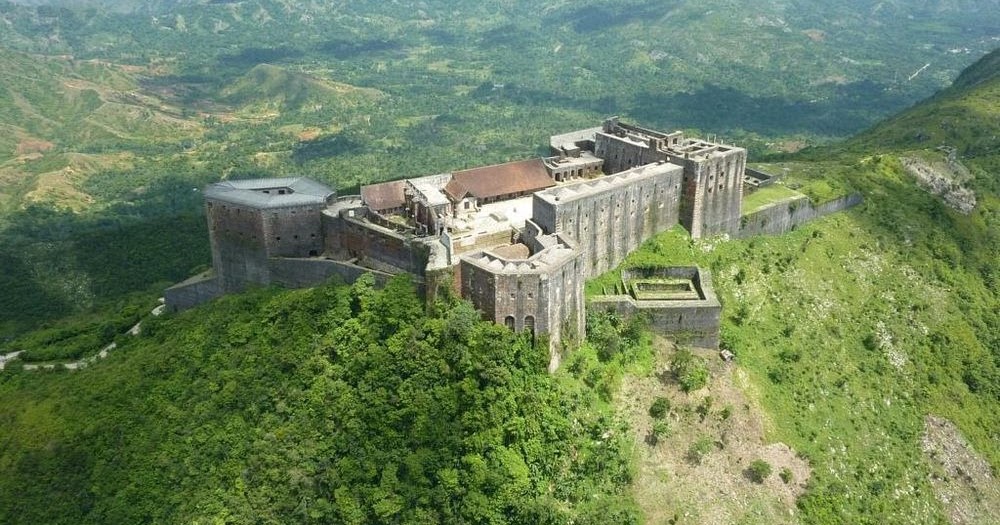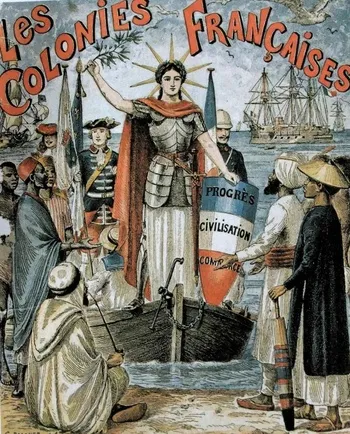When the Empires of Europe bought their slaves from Africa, they put many of them to work on the lush plantations in the Caribbean colonies. The British had Jamaica, Barbados, the Leeward Islands and the Windward Islands. The Spanish had Cuba, Puerto Rico and the Dominican Republic. The Dutch controlled Aruba, Curacao and Sint Maarten. The Danish obtained the islands of St Jan, St Thomas and St. Croix. Even Germany, had a small presence in the Virgin Islands.
Finally, there was the ubiquitous presence of the mighty French Empire. France’s principal Caribbean colony was the future nation of Haiti – known back in the 1700’s as Saint-Domingue. This abundant little territory produced roughly 40 percent of the sugar and 60 percent of the coffee that was imported back to Europe.
Even by the harsh standards of the time, the slave operation in Saint-Domingue was particularly brutal. With more and more slaves arriving from west Africa on a regular basis, the white leaders found themselves increasingly outnumbered – which made them even more vicious.
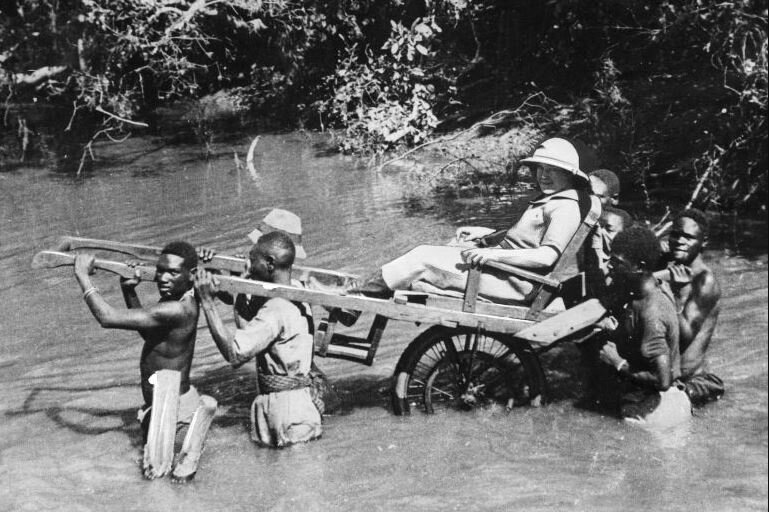
Hitherto, the social hierarchy in Saint-Domingue wasn’t that simple. At the top were the planters – rich whites (Grands Blancs) who owned and operated the very lucrative plantations. Next were the free people of colour, who were mostly mixed race (Affranchis). Their white relatives were often from the wealthy classes, therefore mixed race citizens regularly inherited property and received a classical french education. Some even owned a few slaves themselves.
It was this extensive property ownership which put them slightly above the working class whites, who were known as the the Petit Blancs. Finally, there were the enslaved black Africans. Despite the harsh conditions and the prevalence of tropical diseases (malaria, yellow fever), they still made up around 80% of the population. The slaves didn’t have many offspring that survived, but their numbers remained high due to the constant influx of new slaves.
It was the planters who initially wanted independence for the colony, so that they could sell their sugar, coffee, tobacco and cotton to foreign markets outside the French empire. The Petit Blancs were loyal to the French crown, the Affranchis were split, whilst the slaves yearned only for their personal freedom.
On August 26, 1789, the National Assembly of France approved the Enlightenment era human rights document, called the “The Rights of Man”. Naturally, those living in the French colonies demanded that their colonial overlords recognise this new French law.
It was the resentment between the social classes, in addition to their conflicting goals, which basically saw the upcoming Haitian revolution split into 2 phases. The fight for human rights, followed by the fight for independence from France.
Liberté, Egalité, Fraternité
There were several incidents of unrest before the nationwide revolt. In 1789, an angry squad of Petit Blancs took the city of Port-au-Prince. In response, France sent extra troops to restore order – which they did. A year later, three hundred free people of colour, under the leadership of Vincent Ogé, launched an attack on the capital city of Cap-Francais. This was in response to being denied the same rights as the white ownership class. The campaign failed.
It was while the French forces were busy putting down these rebellions that thousands of slaves took the opportunity to escape into the mountains of the north. Known as maroons, they joined forces with previously escaped slaves still living in the wilderness, and gradually formed a powerful army.
After continuing to be denied the universal human rights that had been won during the French Revolution, the slaves of Saint-Domingue lost patience with their colonial masters, and on August 21, 1791, they fought back.
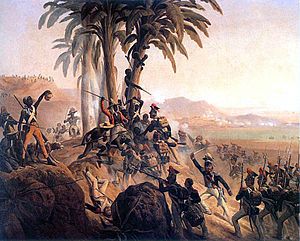
The First Rebellion
Following a large Voodoo ceremony the previous week, the beginning stages of the revolution saw thousands of white Europeans slaughtered, with hundreds of plantations burnt to the ground. In the following weeks, the white survivors gathered together to form militias and take revenge.
They dealt some heavy blows to the black armies, but it didn’t stop the rebel slaves taking over the northern part of the colony. In the South, commanded by André Rigaud, the affranchis joined in the revolt.
The leader of the rebellion was a man named Toussaint Louverture. After originally aligning with their Spanish neighbours in Santo Domingo – who also provided the slaves with weapons – he pragmatically switched his alliance to the French Crown. Louverture claimed that through military action, he was enforcing French law. Essentially, he was punishing the colonial overlords for ignoring the new rights of man.
Paris Responds
The French Government dispatched a new Governor, an abolitionist named Léger-Félicité Sonthonax, along with several thousand troops, to get the colony back under control. Sonthonax outlawed slavery and managed to broker a tentative peace, but all that changed due to outside complications.
France was busy at War with Spain and Great Britain, and both of these Empires had their sights on Saint Domingue. The British already had a large presence in the region, and the Spanish occupied the eastern half of the island of Hispaniola (the present day Dominican Republic).
But the French aligned Louverture successfully drove the Spanish out of the colony in the north. The British Navy did manage to successfully blockade the island for some time, in addition to driving Sonthonax’s troops out of Port-au-Prince.
But their desire to bring back slavery meant that they had no support from the locals. An outbreak of yellow fever also decimated their numbers. Couple this with the firepower of the southern forces (still loyal to France) under Rigaud, and the British had no choice but to withdraw in 1798.
Governor-for-life
The success of Toussaint Louverture seemed to know no bounds. After freeing the all slaves in Saint Domingue and many in neighbouring Santo Domingo, he vanquished all his domestic rivals (ie. the forces of Sonthonax & Rigaud), to become the undisputed leader of Saint Domingue in 1801.
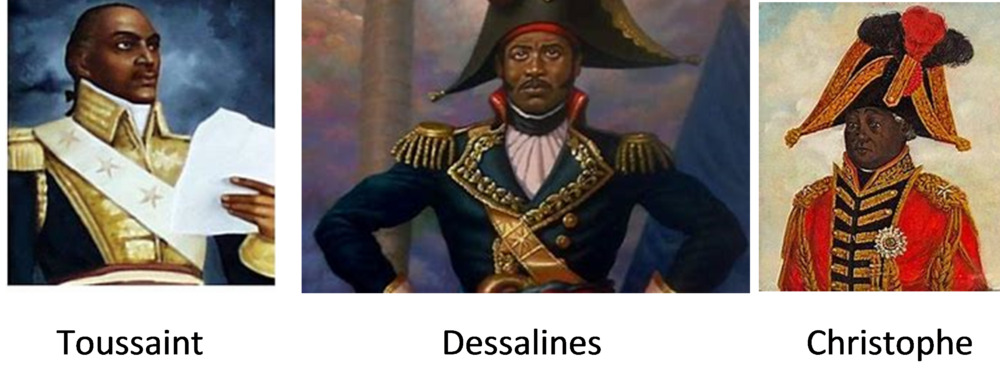
He issued a new constitution in which he declared himself Governor-for-Life. And even though the land was still officially a French colony, Louverture called for the establishment of a black sovereign state.
In a surprise move, he did reinstate the plantation system (using paid workers) and did many trade deals with formerly hostile entities. He also maintained a large, well equipped national Army.
Enter Mr. Bonaparte
In 1799, Napoleon Bonaparte became the new leader of the French Republic, and very much wanted the rich Caribbean colony back. He sent his brother in law, Charles Leclerc, along with a large army, to re-conquer Saint Domingue, reinstate slavery, and start earning much needed funds for France’s colonial expansion into the Americas.
Louverture was captured by the French in 1802, and died a year later in prison. But in the end, Napoleon’s forces failed. Under their new leader, Jean-Jacques Dessalines, the Army of former slaves (with a little help from the yellow fever) obliterated the French Army and won their independence. On the 1st of January 1804, the Republic of Haiti was born. This new official name was derived from the indigenous Arawak word, ‘Ayti’, which roughly translates as Mountainous Land.
Dessalines became the new Governor, and later Emperor, of Haiti. Fearing another invasion he maintained a large army and built the now infamous Citadelle Laferriere – the largest fortress in the western hemisphere. But his decision to make every citizen either a soldier or a labourer was not very popular. In 1806 he was assassinated, which plunged the nation into civil war, followed by partition.
The North (Renamed ‘The Kingdom of Haiti’) was under the control of President, later King, Henri Christophe. Another former revolutionary General, Alexandre Pétion was elected President of the South (Still known as ‘The Republic of Haiti’). In 1820 however, the nation of Haiti would be reunited under President Jean-Pierre Boyer.
In Conclusion
To this day, Haiti is the only nation created by former slaves. But whilst it was the richest in the western hemisphere during the revolution, today it is one of the poorest. Two centuries of political corruption and instability, which peaked under the brutal dictatorships of Francois “Papa Doc” Duvalier, and his son, Jean-Claude “Baby Doc” Duvalier, have been horrendous for this small country.
Add to this the ongoing economic exploitation by the west (specifically France and the US), and a series of catastrophic earthquakes, the 11.5 million inhabitants of this wonderful nation have been left bruised and battered. However, with a little help from the United Nations, Haiti is rebuilding. At the time of writing, no reparations have been offered by France, but the issue persists.
Watch this space.
